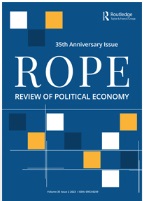Deciphering the Chinese Economic Miracle: The Resolution of an Age-Old Economists’ Debate — and its Central Role in Rapid Economic Development
Review of Political Economy, 10.1080/09538259.2023.2180200
Publication year: 2023
Abstract
We offer an account of China’s unparalleled economic rise by considering evidence on public banks and their role in decentralizing the resource allocation task of a growing economy. Chinese economic and banking history since the post-Mao reforms reveals an ingenious integration by the local policymakers of Currency (public money supply) and Banking School (decentralized money creation) policy recommendations previously thought incompatible, resulting in a social democracy with Chinese characteristics. Our theoretical and historical discussions offer policy insights into the constructive role of quantitative public bank easing in economic development

